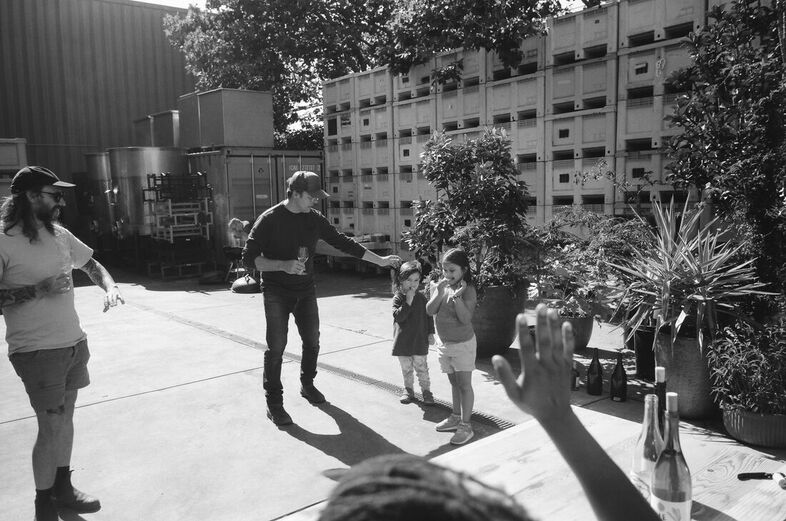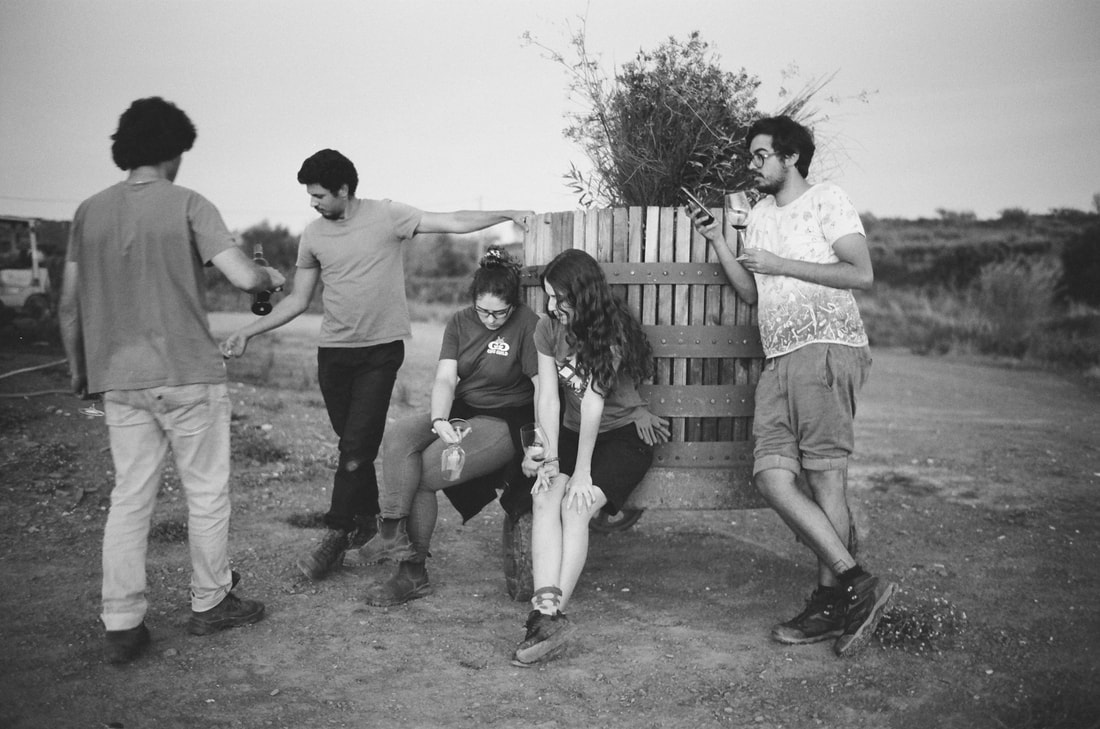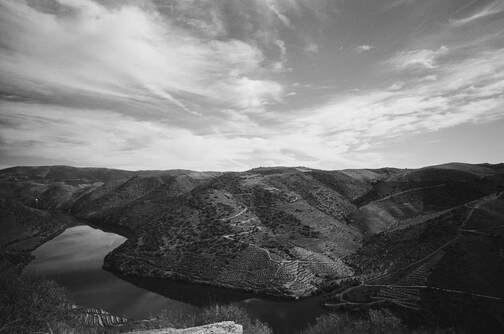Interview with Chris Brockway About the "Perfect Red"
February 28. 2022
Selection Massale: Can you talk a little bit about how you approach making the "perfect red" and how it changes (or not) over the vintages?
Chris Brockway: I interpret “perfect red” as to what I think the name is supposed to mean. Something that’s easy to drink but has enough complexity to elevate the wine. Not really going for a cliche, a wine “over-delivers” for what the wines costs, but to be something that’s affordable and “perfect” for what it is and how it’s priced.
In chasing this metaphysical (in the philosophical sense) “perfect red” my perception of it has changed over each vintage as I don’t perceive there's an objective "perfect red” floating out there but something that’s subjective person to person. As this has evolved over the last few years, we’ve started adding some Cabernet rosé to the red (a reverse saigneé?) to balance the wine more approachable while young.
SM: Now two decades into making wine in CA, have there been any shifts in the way you approach red wines in general?
CB: I think one thing I touched on when you were visiting last was after the 2020 fires, we are now more apprehensive about letting some grapes hang on the vine. Now we tend to pick some grapes earlier, plant or graft vines that can be picked earlier due to concerns with fires and fire season. It definitely carried over to how we make some of the wines. Picking a little earlier, even for us, making some wines a little lighter than we already make them. Leaving others to hang on the vine that needs that extra amount of time but hedging our bets so to speak.
Overall, there’s definitely been a shift away from having predominantly red wines. Whether fermenting white grapes with reds, making more different types and styles of whites and rosés. Having more skin-fermented white wines that have some of the same structure as reds or darker rosés that blur the line with light reds.
SM: I like to think there is something tongue and cheek about the idea of the perfect red. When you think of making something 'perfect' do you think about making it approachable to many or more of a representation of the ideal?
CB: I definitely agree there is something tongue and cheek about the idea of the perfect red. As I touched on above there is also something philosophical about the idea of the perfect red that I really like as well. Because is there such a thing as a perfect red…. no. But we can have something that’s approachable, that’s grown correctly, made authentically, and within the context of wine is affordable.
SM: Tannins -- where did they go?! Do you think more structured reds will become more in vogue as the pendulum swings back from glouglou?
CB: Hopefully the pendulum more balances than swings. I remember drinking a bottle of Pepiere Cab Franc Rosé with Guilhaume at now-shuttered Bar Agricole many years back. I’m not sure if he still thinks this but at the time, he felt rosé wines gives one a true sense of terroir. But I do think there is a place for lighter wines, not just for glou glou but also to convey a very transparent sense of place. But just like some wines/grapes/terroirs might make better lighter style wines as opposed to something approaching full extraction. There is obviously the opposite as well where a variety grown in a certain terroir reaches its full potential as a fully macerated wine. I find this to be true of our Nero d’Avola from Fox Hill Vineyard in Mendocino. It makes a really nice rosé on years where we have really good yields, but it reaches its full potential when fermented on the skins for an extended period of time to really have those tannins contribute to the overall wine. There's a time, or more so a place for everything.
SM: How long have you been working with the Wirth Ranch, and can you talk a bit about your relationship with growers impacts the wines?
CB: I’ve been working with Wirth Ranch since 2011. We now get 100% of the vineyard (Cab Sauv, Zinfandel, Petite Sirah, Valdiguie, Trousseau Noir, Syrah) with the idea that the whole vineyard is now converted to organic farming as opposed to just certain blocks. It’s a longer view with the vineyard and we still have much work to do getting older sections back in good condition. So hopefully each year shows the hard work, but we still have much that needs to be done as we both learn.
Chris Brockway: I interpret “perfect red” as to what I think the name is supposed to mean. Something that’s easy to drink but has enough complexity to elevate the wine. Not really going for a cliche, a wine “over-delivers” for what the wines costs, but to be something that’s affordable and “perfect” for what it is and how it’s priced.
In chasing this metaphysical (in the philosophical sense) “perfect red” my perception of it has changed over each vintage as I don’t perceive there's an objective "perfect red” floating out there but something that’s subjective person to person. As this has evolved over the last few years, we’ve started adding some Cabernet rosé to the red (a reverse saigneé?) to balance the wine more approachable while young.
SM: Now two decades into making wine in CA, have there been any shifts in the way you approach red wines in general?
CB: I think one thing I touched on when you were visiting last was after the 2020 fires, we are now more apprehensive about letting some grapes hang on the vine. Now we tend to pick some grapes earlier, plant or graft vines that can be picked earlier due to concerns with fires and fire season. It definitely carried over to how we make some of the wines. Picking a little earlier, even for us, making some wines a little lighter than we already make them. Leaving others to hang on the vine that needs that extra amount of time but hedging our bets so to speak.
Overall, there’s definitely been a shift away from having predominantly red wines. Whether fermenting white grapes with reds, making more different types and styles of whites and rosés. Having more skin-fermented white wines that have some of the same structure as reds or darker rosés that blur the line with light reds.
SM: I like to think there is something tongue and cheek about the idea of the perfect red. When you think of making something 'perfect' do you think about making it approachable to many or more of a representation of the ideal?
CB: I definitely agree there is something tongue and cheek about the idea of the perfect red. As I touched on above there is also something philosophical about the idea of the perfect red that I really like as well. Because is there such a thing as a perfect red…. no. But we can have something that’s approachable, that’s grown correctly, made authentically, and within the context of wine is affordable.
SM: Tannins -- where did they go?! Do you think more structured reds will become more in vogue as the pendulum swings back from glouglou?
CB: Hopefully the pendulum more balances than swings. I remember drinking a bottle of Pepiere Cab Franc Rosé with Guilhaume at now-shuttered Bar Agricole many years back. I’m not sure if he still thinks this but at the time, he felt rosé wines gives one a true sense of terroir. But I do think there is a place for lighter wines, not just for glou glou but also to convey a very transparent sense of place. But just like some wines/grapes/terroirs might make better lighter style wines as opposed to something approaching full extraction. There is obviously the opposite as well where a variety grown in a certain terroir reaches its full potential as a fully macerated wine. I find this to be true of our Nero d’Avola from Fox Hill Vineyard in Mendocino. It makes a really nice rosé on years where we have really good yields, but it reaches its full potential when fermented on the skins for an extended period of time to really have those tannins contribute to the overall wine. There's a time, or more so a place for everything.
SM: How long have you been working with the Wirth Ranch, and can you talk a bit about your relationship with growers impacts the wines?
CB: I’ve been working with Wirth Ranch since 2011. We now get 100% of the vineyard (Cab Sauv, Zinfandel, Petite Sirah, Valdiguie, Trousseau Noir, Syrah) with the idea that the whole vineyard is now converted to organic farming as opposed to just certain blocks. It’s a longer view with the vineyard and we still have much work to do getting older sections back in good condition. So hopefully each year shows the hard work, but we still have much that needs to be done as we both learn.
Brief Interview with Mateus Almeida about Maceration Time
February 22, 2022
SM: pump over or punch downs: what is your school of thought and how does it impact the wine?
Mateus Almeida: I use many different technics of working wine according to the type of wine and the type of grapes. In this particular case is pumping over
SM: How does the harvest impact your decision about maceration times?
MA: It has a big impact. Every year is different. Depends on if it’s a cool year or hot year and the quality of the grapes. This can take to have long or short macerations. For this wine coming from cooler areas usually, the maceration is short
SM: How does the cepage impact your decision on maceration time, especially with a bottling like O Clarete that includes a few white grapes?
MA: Douro Traditional vineyards have many different varieties so the cepage has not so much influence in this case
SM: How has the style of red winemaking changed in the Douro over the years and has this impacted your approach?
MA: We try to macerate less the wines so they can express more finesse and different aromas than the classical red fruit
Mateus Almeida: I use many different technics of working wine according to the type of wine and the type of grapes. In this particular case is pumping over
SM: How does the harvest impact your decision about maceration times?
MA: It has a big impact. Every year is different. Depends on if it’s a cool year or hot year and the quality of the grapes. This can take to have long or short macerations. For this wine coming from cooler areas usually, the maceration is short
SM: How does the cepage impact your decision on maceration time, especially with a bottling like O Clarete that includes a few white grapes?
MA: Douro Traditional vineyards have many different varieties so the cepage has not so much influence in this case
SM: How has the style of red winemaking changed in the Douro over the years and has this impacted your approach?
MA: We try to macerate less the wines so they can express more finesse and different aromas than the classical red fruit
Region Spotlight: the Douro
|
Mateus Nicolau De Almeida is located in the Douro which is a region known for: being a UNESCO World Heritage site, having terraced vineyards, a wide range of schist soils, and the birthplace of Port. The valley is two hours from the coastal city of Porto and divided into three sub-regions: Baixo Corgo, Cima Corgo and Douro Superior.
The perfect red bottling is sourced from Biaxo Corgo which is the westernmost sub-region known for a cooler and rainy climate. Overall, the region is more continental, protected by mountain ranges the Serra de Alvấo, Serra de Padrela and Serra de Bornes in the North; Serra do Marấo in the west. Combine these steep slopes and soaring mountains with the Douro River and its tributaries cutting through — the region is unequivocally grand. The photo to the right was taken by Nadim this summer on a drive to see some of Mateus’s vineyards. He described the region as a fusion of the Mosel and Rhone while still being very much it’s own. “For people who hold a grudge towards grape variety driven wine talk, it feels like reaching nirvana, because nothing in the wine culture there is driven by grape variety.” |



